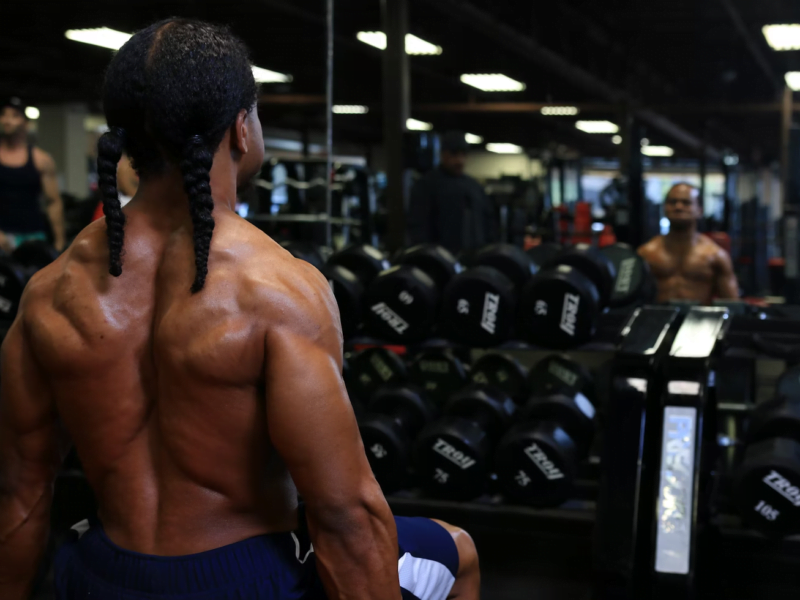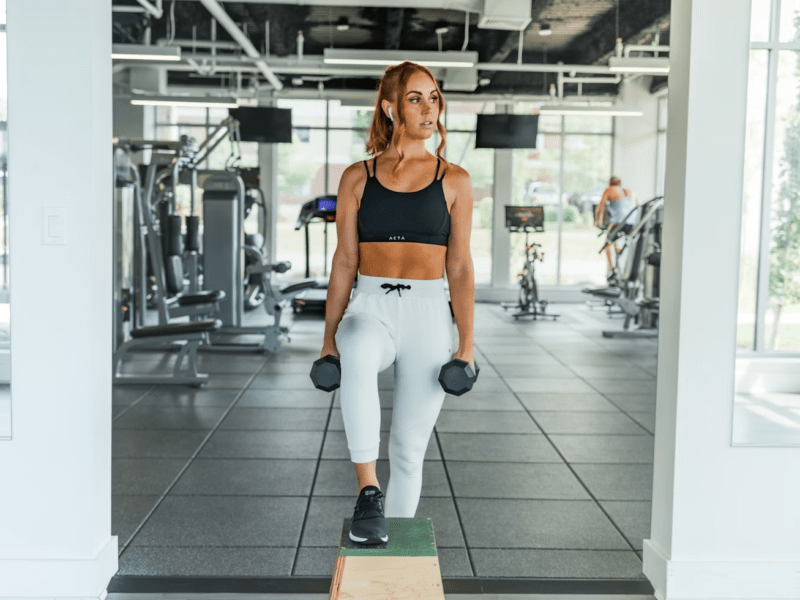“Walking is the best possible exercise. Habituate yourself to walk very far.” – Thomas Jefferson
Walking is a low-impact exercise suitable for all ages, but its potential to build muscle is often underestimated. While walking is primarily known for its cardiovascular benefits, it does engage several muscle groups and can contribute to muscle endurance and strength over time.
So, if you want to improve muscle tone and overall fitness, walking is a great choice, especially with weight.
Can Walking With Weights Help Build Muscle?
Walking with weights can make your muscles work harder. You can use ankle weights, a weighted vest, or hand weights. Adding weights increases resistance, making your muscles work more. This can lead to better muscle growth and strength.
For example, a weighted vest makes your legs and core work harder. Wearing a vest that adds 10-20 pounds can increase the intensity of your walk significantly. Hand weights can work your arms and shoulders. A study from the American Council on Exercise found that walking with weights can increase calorie burn by 5-15% and improve muscle activation in the arms and upper body.
While walking with weights doesn’t burn as much calories as lifting weights, it still helps. Experts suggest starting with light weights to avoid injury. Increase the weight slowly as you get stronger. Maintain proper form to avoid straining your joints and muscles.
Even with light weights, regular walking can enhance muscle tone and strength over time.
What Happens In Your Body When You Walk Everyday?
While you walk, there are a lot of things that happen in your body:
Cardiovascular Effects: Walking strengthens your heart and improves blood circulation. Regular walking helps lower blood pressure and cholesterol levels. According to the American Heart Association, brisk walking for 30 minutes a day can reduce the risk of heart disease by up to 19%. Walking also increases stamina, making it easier to perform daily activities without getting tired.
Metabolic Effects: Walking boosts your metabolism, helping you burn calories and in body recomposition. This helps with weight management and reduces the risk of metabolic disorders like diabetes. Studies show that walking can help reduce body fat, particularly abdominal fat, which is a risk factor for many diseases. Walking also improves insulin sensitivity, which helps control blood sugar levels.
Musculoskeletal Effects: Walking is a weight-bearing exercise that strengthens bones and joints. It increases bone density and reduces the risk of osteoporosis, a condition that makes bones weak and brittle. It also improves muscle endurance, especially in the lower body. It helps keep joints flexible and reduces the risk of arthritis. Regular walking can even improve your posture by strengthening the muscles that support your spine.
Which Muscles Are Built With Walking?
Primary Muscles:
If you are looking to build quadriceps, hamstrings, and calves then walking should be on your workout routine. Your quadriceps and hamstrings move your thighs, and your calves push you off the ground. These muscles work together to create the smooth, repetitive motion of walking. Walking combined with bodyweight exercises also targets core muscles, including your abs and obliques, to help you stay balanced and stable. A strong core supports your spine and reduces the risk of lower back pain.
Secondary Muscles:
Your glutes help propel you forward and provide stability. Walking uphill or at a faster pace can engage your glutes more intensely. Your lower back muscles support your spine and help you maintain good posture. These muscles are also involved in stabilizing your body as you move.
Walking on different terrains and at varying speeds can change which muscles are engaged. Walking uphill requires more effort from your leg muscles and glutes. It can also increase your heart rate and calorie burn. Walking on uneven surfaces, like trails or sand, engages your core muscles more as you work to maintain balance. Increasing your walking speed can also engage your muscles more intensely. A brisk walk can elevate your heart rate and enhance muscle activation, providing a more effective workout.
Benefits of Walking With Weights
Enhanced Muscle Activation:
The additional resistance from weights increases muscle activation. This helps tone and strengthen muscles more effectively. Walking with ankle weights, for example, can engage your leg muscles more. Hand weights can work your arms, shoulders, and upper body. The extra effort required to carry weights boosts muscle activation throughout your body.
Increased Calorie Burn:
Carrying extra weight while walking boosts calorie expenditure. This can aid in weight loss and improve overall fitness. For instance, a 155-pound person burns approximately 167 calories during a 30-minute brisk walk. Adding weights can increase this calorie burn by 5-15%, depending on the weight and intensity of the walk.
Improved Bone Density:
Weight-bearing exercises like walking with weights stimulate bone growth. This helps maintain bone density and reduces the risk of osteoporosis. Adding weights increases the impact on your bones, promoting bone health and strength.
Mental Health Benefits:
Exercise, including walking with weights, releases endorphins. These are chemicals in the brain that improve mood and reduce stress. Walking with weights can also enhance cognitive function and promote better sleep. The mental health benefits of regular walking include reduced anxiety, improved mood, and better overall well-being.
Key Takeaways
Walking, especially when combined with weights can be important for a fitness routine if you’re looking to build lean muscles. While it may not build big muscles like lifting weights, it offers many benefits for heart health, metabolism, and muscle endurance. Adding weights to your walk can increase muscle use, burn more calories, and strengthen bones.
Use light weights to avoid getting hurt, and slowly increase the weight as you get stronger. Also, try to change your routine by walking on different surfaces and at different speeds.
By understanding its benefits, following the above tips, and making it a part of your daily routine, you can improve your overall fitness and well-being.





